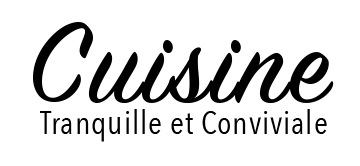Production lines are a series of interconnected machines and processes that work together to produce a finished product. They are used in a wide variety of industries, including food and beverage, manufacturing, and packaging. Production lines can be highly automated, with little or no human intervention required, or they can be more labor-intensive.
Arabic bread, also known as pita bread, is a staple food in many Middle Eastern countries. It is a thin, unleavened bread that is cooked in a hot oven until it puffs up. Arabic bread production lines typically consist of the following steps:
Mixing: The ingredients for the bread, including flour, water, yeast, and salt, are mixed together until they form a dough.
Dividing and shaping: The dough is divided into individual pieces and then shaped into round balls.
Proving: The dough balls are allowed to rise in a warm, humid environment until they double in size.
Baking: The dough balls are baked in a hot oven until they puff up and turn golden brown.
Packaging: The baked bread is cooled and then packaged for sale.
Chocolate Production Line
Chocolate production line typically consist of the following steps:
Roasting: The cocoa beans are roasted to develop their flavor.
Winnowing: The roasted beans are winnowed to remove the shells.
Nibbing: The nibs, which are the inner part of the bean, are ground into a paste.
Conching: The cocoa paste is conched, which is a process of mixing and heating that develops the chocolate's flavor and aroma.
Tempering: The chocolate is tempered, which is a process of heating and cooling that gives it a smooth, glossy finish.
Molding: The tempered chocolate is molded into various shapes, such as bars, chips, and truffles.
Packaging: The molded chocolate is cooled and then packaged for sale.
Feed Production Line
Feed production lines typically consist of the following steps:
Grinding: The feed ingredients, such as grains, oilseeds, and minerals, are ground into a powder.
Mixing: The ground ingredients are mixed together to create a balanced feed ration.
Pelleting: The feed mixture is pelleted, which is a process of compressing it into small, cylindrical pellets.
Cooling: The pellets are cooled and then packaged for sale. خط انتاج الخبز العربي
Clothing Production Line
Clothing production lines typically consist of the following steps:
Cutting: The fabric is cut into the desired shapes of the garments.
Sewing: The pieces of fabric are sewn together to create the garments.
Finishing: The garments are finished, which may include processes such as pressing, ironing, and quality control.
Packaging: The finished garments are packaged for sale.
Cardboard Box Production Line
Cardboard box production lines typically consist of the following steps:
Corrugating: The cardboard is corrugated, which is a process of creating a wavy pattern in the cardboard to make it stronger.
Printing: The cardboard is printed with the desired design, such as the company's logo or branding.
Cutting: The cardboard is cut into the desired size and shape of the boxes.
Folding and gluing: The cardboard is folded and glued to create the boxes.
Packaging: The finished boxes are packaged for sale.
Tissue Production Line
Tissue production lines typically consist of the following steps:
Pulping: The wood pulp is pulped, which is a process of breaking it down into small fibers.
Bleaching: The pulp is bleached to make it white.
Forming: The pulp is formed into a thin sheet of tissue.
Drying: The tissue is dried.
Finishing: The tissue is finished, which may include processes such as creping, embossing, and cutting.
Packaging: The finished tissue is packaged for sale.
Conclusion
Production lines are an essential part of modern manufacturing. They allow companies to produce large quantities of products efficiently and cost-effectively. Production lines are used in a wide variety of industries, and they come in all shapes and sizes. Some production lines are highly automated, while others are more labor-intensive. The type of production line that is used depends on the specific product being produced and the needs of the company.




